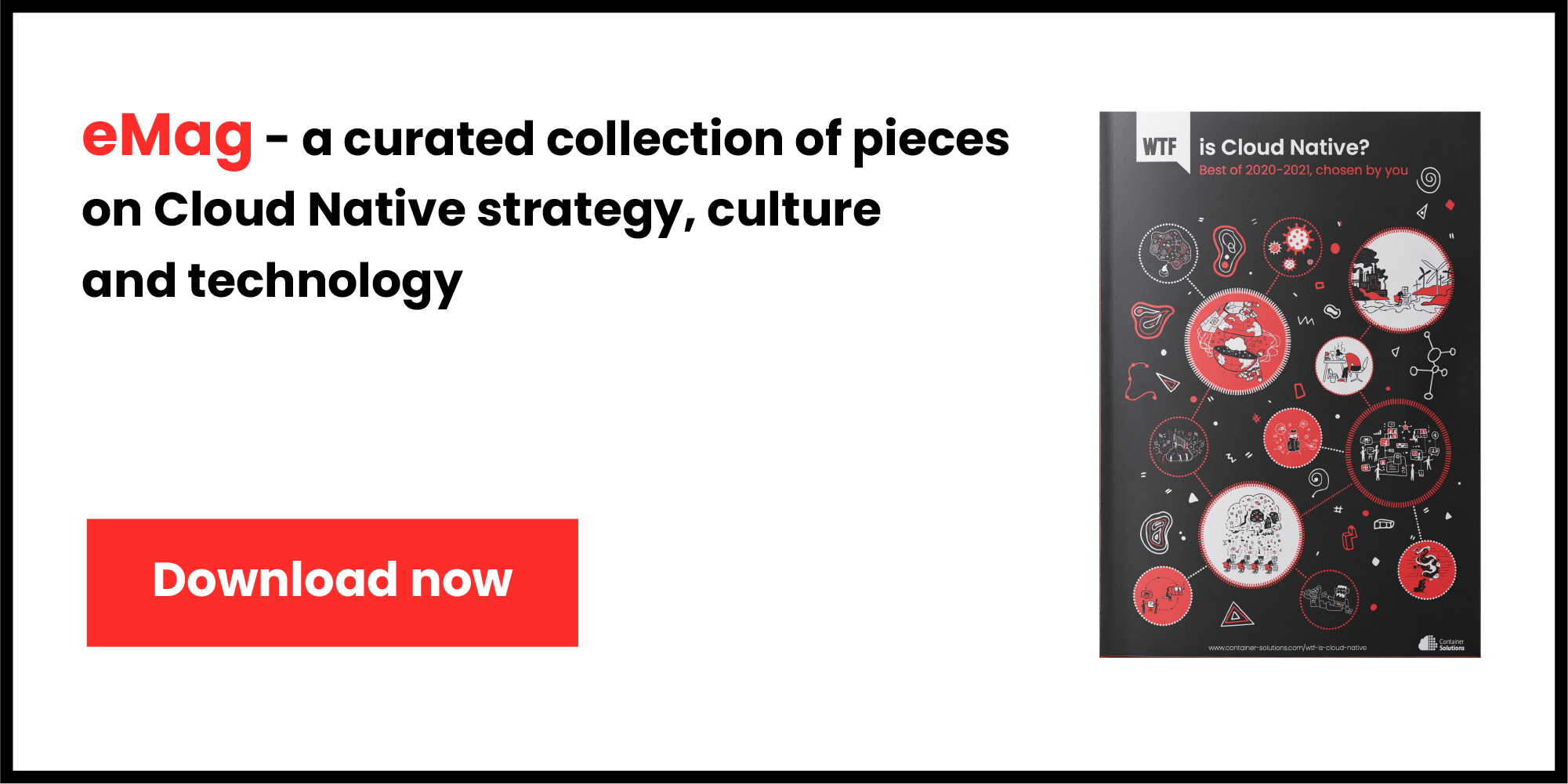WTF is Cloud Native? was born out of a desire to both share what we’ve learned with the broader Cloud Native community, and provide a platform for others in the community to do the same thing. As we complete our first year of publishing, we’ve chosen a few of our favourite books that cover the main high-level topics we’ve focussed on. All of these are highly recommended additions to your bookshelf.
Culture
Accelerate by Nicole Forsgren, Jez Humble and Gene Kim
Accelerate presents four years’ worth of solid, original work using cross-sectional research from 2,000 separate organisations into how to organise effective software development organisations. The book shows that software delivery directly impacts organisational performance, for both commercial and non-commercial outcomes. In addition high performers are able to achieve higher levels of throughput, stability and quality: without “moving faster and breaking things” or trading off throughput against stability and quality. Finally, they’ve shown that—when done right—many of the practices from the Agile, Lean and DevOps movements impact both software delivery and organisational performance.
Cloud Native Transformation by Pini Reznik, Jamie Dobson and Michelle Gienow
Our book is for anyone who is seriously contemplating Cloud Native. It is not a technical manual, though it’s rooted in thorough understanding of Cloud Native architecture, principles, tools, and techniques. Instead, it’s a survival kit in the form of a high-level overview of the challenges and choices faced by any organisation, and how to handle them.
Team Topologies by Matthew Skelton and Manuel Pais
Team Topologies describes how teams are arranged in an organisation, including their responsibility boundaries and how they communicate or interact with other teams. The book describes optimising teams for fast flow by having the majority of people working inside cross-functional teams aligned to the stream of change with end-to-end responsibility for the implementation of a change or piece of new functionality, including supporting the new software in production/live.
Switch: How to Change When Change is Hard by Chip and Dan Heath
As a leader within an organisation, being able to get people to change behaviour is key. Chip and Dan Heath—behavioural scientists from Duke and Stanford respectively—piece together research into behaviour change to create an accessible and case study driven manual. Playing on Jonathan Haidt’s Elephant and the Rider metaphor, the Heath brothers suggest that in order to switch behaviour you need to Direct the Rider—a person’s rational side that needs clarity and a plan to follow; Motivate the Elephant—a person’s emotional side that needs to not feel change is too hard or unenjoyable; and Shape the Path—the social and physical situation the behaviour exists within.
The Phoenix Project by Gene Kim, George Spafford and Kevin Behr
(followed by the Unicorn Project by Gene Kim)
A novelised handbook to introduce DevOps concepts and ideas piece by piece, based on Eli Goldratt’s The Goal. Many people will recognise key players from the book inside their own company (from the lead engineer who is always the only one able to fix everything, to the people doubting change from the start), and learn how to better deal with changing demands and other challenges while still running successful projects.
Tech
Building Microservices (2nd edition) by Sam Newman
The book is aimed at practitioners and architects and will help you understand what microservices are, the advantages and disadvantages, and contains lots of practical advice to help implement microservices in your own organisation. The second edition covers Kuberntes and Serverless, expands coverage around coupling, cohesion and information hiding, and also covers UI more extensively.
Domain Driven Design by Eric Evans
Domain Driven Design is now firmly established as a classic for anyone working on distributed systems. The book includes detailed explanations of a number of key concepts, such as bounded contexts, aggregates, and ubiquitous language, that are essential for the modern software architect.
The State of the Kubernetes Ecosystem by Janakiram MSV
A high level overview of the Kubernetes landscape, focusing on architecture, processes and tooling. This ebook covers everything from the inception of Kubernetes in 2015, to adoption patterns and the internal workings of the platform. This ebook is a great place to start if you’re looking to understand how Kubernetes works, and how it fits into modern enterprise IT strategy.
Climate
How to Avoid a Climate Disaster by Bill Gates
Gates' book is an excellent overview of the areas of society and industry that will have to change over the next decades to, as he says, avoid a climate disaster. It's an easy read and it doesn't sugar coat. He points out there are a lot of potential solutions, but many of them are going to be so politically toxic we need to wise up to the fact we aren't going to get them. We need to concentrate on the ones governments can sell to the population. Gates gets a kicking in many climate circles because the book focuses on technical solutions rather than degrowth. Shoot me, but I tend to agree with him.


 Previous article
Previous article
